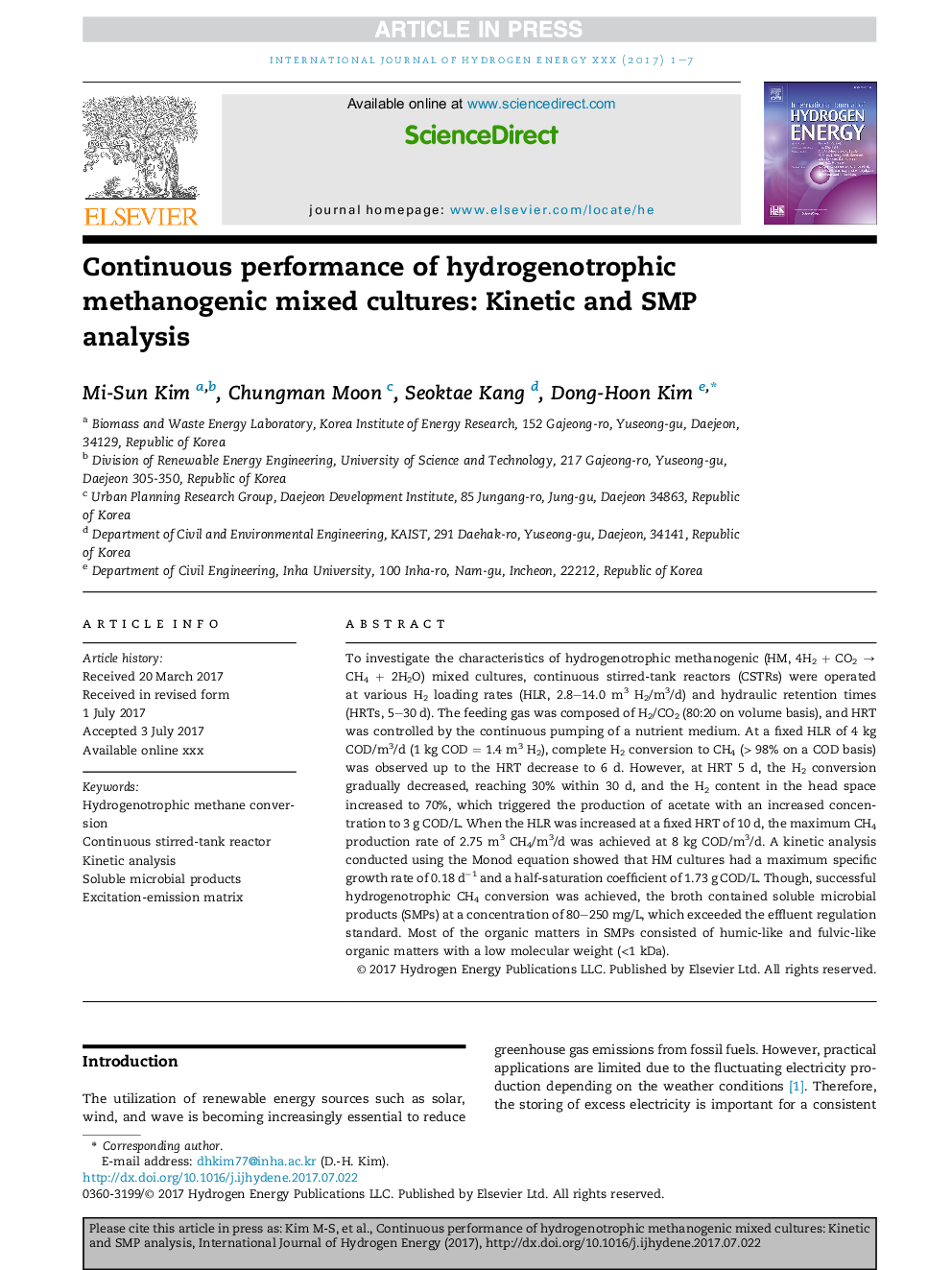| Article ID | Journal | Published Year | Pages | File Type |
|---|---|---|---|---|
| 7709703 | International Journal of Hydrogen Energy | 2017 | 7 Pages |
Abstract
To investigate the characteristics of hydrogenotrophic methanogenic (HM, 4H2 + CO2 â CH4 + 2H2O) mixed cultures, continuous stirred-tank reactors (CSTRs) were operated at various H2 loading rates (HLR, 2.8-14.0 m3 H2/m3/d) and hydraulic retention times (HRTs, 5-30 d). The feeding gas was composed of H2/CO2 (80:20 on volume basis), and HRT was controlled by the continuous pumping of a nutrient medium. At a fixed HLR of 4 kg COD/m3/d (1 kg COD = 1.4 m3 H2), complete H2 conversion to CH4 (> 98% on a COD basis) was observed up to the HRT decrease to 6 d. However, at HRT 5 d, the H2 conversion gradually decreased, reaching 30% within 30 d, and the H2 content in the head space increased to 70%, which triggered the production of acetate with an increased concentration to 3 g COD/L. When the HLR was increased at a fixed HRT of 10 d, the maximum CH4 production rate of 2.75 m3 CH4/m3/d was achieved at 8 kg COD/m3/d. A kinetic analysis conducted using the Monod equation showed that HM cultures had a maximum specific growth rate of 0.18 dâ1 and a half-saturation coefficient of 1.73 g COD/L. Though, successful hydrogenotrophic CH4 conversion was achieved, the broth contained soluble microbial products (SMPs) at a concentration of 80-250 mg/L, which exceeded the effluent regulation standard. Most of the organic matters in SMPs consisted of humic-like and fulvic-like organic matters with a low molecular weight (<1 kDa).
Keywords
Related Topics
Physical Sciences and Engineering
Chemistry
Electrochemistry
Authors
Mi-Sun Kim, Chungman Moon, Seoktae Kang, Dong-Hoon Kim,
